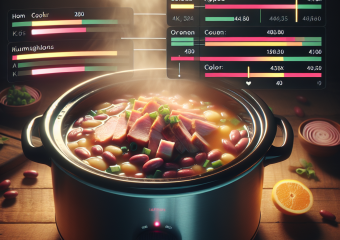Food for Thought, by Charlyn Fargo – Creators Syndicate

What we eat really makes a difference in how we feel and our quality of life.
Just this week, I came across three different studies looking at food and health, from the impact of omega-3s to strawberries to beet juice.

A study in Nature Communications found that people who had greater levels of omega-3 fatty acids — specifically, EPA (eicosapentaenoic acid) and DHA (docosahexaenoic acid) — had a 13% lower risk for all-cause mortality, as well as a lower risk for death due to cancer, cardiovascular disease and other causes combined, compared with those with lower levels of omega-3 fatty acids. Foods high in omega-3 fatty acids include salmon, mackerel, herring, oysters, sardines, anchovies, flax and chia seeds, walnuts and soybeans. There are plenty to choose from.
A second study in the journal Nutrients found that adults with obesity and high low-density lipoprotein, or LDL, cholesterol levels who had a serving of freeze-dried strawberry supplements every day for four weeks experienced reductions in serum insulin and insulin resistance, compared with controls. A serving of the freeze-dried strawberries was equal to 2.5 servings of fresh or frozen strawberries, if you prefer your strawberries that way.

And then there’s beetroot juice. Research has shown that beetroot juice could help combat inflammation and lower blood pressure and cholesterol levels, making the juice both heart- and gut-friendly. Beetroot juice also has antioxidants — particularly betalains — that could aid in preventing cancer, and it may also help athletes by improving their lung function, boosting their energy and workout stamina, and strengthening their muscle contractions. The new study was published in the May issue of Redox Biology and found that drinking beet juice was associated with a change in the bacteria in saliva, indicative of improved cardiovascular health. It also resulted in a lower number of bacteria that tend to promote inflammation.
I’m not advocating only drinking beet juice or just eating salmon or strawberries. All foods can fit into a healthy eating pattern. What’s important is that your plate contains heart-healthy, immune-boosting foods such as these. We all need variety on our plates. If we fill our plate with foods high in nutrients, there won’t be room for the empty-calorie foods that don’t offer our bodies the nutrients we need for good health. It’s a choice we make every time we go through the drive-thru or sit down to a home-cooked meal. The studies should give us food for thought that every bite counts.
Q and A

Q: What are sprouted grains, and are they more nutritious?

A: Like planting a seed in your garden, grains are dormant seeds, holding the potential to produce new plants. With the right temperature and moisture, the sprouting process begins, making the grain’s nutrients more bioavailable when we eat that sprouted grain. When sprouting begins, enzymes within the grain are activated and start to metabolize the starchy endosperm. Manufacturers sprout their grain under carefully controlled conditions, with just the right amount of moisture and warmth until the enzymatic processes are at their peak. The sprouted grains are then made into products using two different approaches: dry or wet. If dried, grains are sprouted and then dried. This dried sprouted grain can be used in cooking as is, or it can be milled into sprouted grain flour. Wet sprouted grains are mashed into a thick puree which is used to make breads, tortillas, muffins and other products. These products are often described as “flourless” and are frequently sold frozen. Because they have already begun to break down, intact sprouted grains cook in a shorter amount of time than unsprouted whole grains. Sprouted whole grain flours can be used in a 1-to-1 substitution for conventional flours.
RECIPE
I have rediscovered my air fryer, which reduces fat calories by 70% to 80% compared with traditional frying. Essentially a mini convection oven, an air fryer circulates hot air all around food for a perfectly crisp exterior in minutes. Try this recipe for Air-Fryer Fish Sticks from Eating Well magazine.
AIR FRYER FISH STICKS
Servings: 2 (5 ounces each)
Cooking spray
8 ounces skinned cod, cut into 1-inch strips
1/2 teaspoon garlic powder
1/2 teaspoon Old Bay seasoning
1/4 cup all-purpose flour
1 large egg
1/2 cup panko breadcrumbs
1 tablespoon fresh parsley, chopped
Coat air-fryer basket with cooking spray. Preheat to 400 degrees. Sprinkle cod with garlic powder and Old Bay. Place flour in a shallow bowl. Lightly beat egg in a second shallow bowl. Dredge each piece of fish in the flour, and then dip in the egg, letting the excess drip off. Then dredge in the breadcrumbs, shaking off any excess. Set on a clean plate. Place the fish in the air-fryer basket, and coat with cooking spray. Cook until browned and crispy, 4 to 6 minutes.
Per serving: 168 calories; 18 grams protein; 16 grams carbohydrates; 2 grams fat (1 gram saturated); 1 gram fiber; 491 milligrams sodium.
Charlyn Fargo is a registered dietitian with SIU School of Medicine in Springfield, Illinois, and the current president of the Illinois Academy of Nutrition and Dietetics. For comments or questions, contact her at [email protected] or follow her on Twitter @NutritionRD. To find out more about Charlyn Fargo and read features by other Creators Syndicate writers and cartoonists, visit the Creators Syndicate website at www.creators.com.
Photo credit: Tetiana Bykovets at Unsplash




